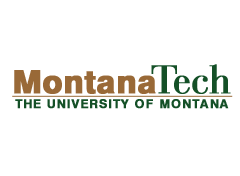Below is a summary of the abstract you submitted. Presenting author(s) is shown in bold.
If any changes need to be made, you can modify the abstract or change the authors.
You can also download a .docx version of this abstract.
If there are any problems, please email Dan at dar78@pitt.edu and he'll take care of them!
This abstract was last modified on May 9, 2016 at 7:27 a.m..

Bacteriophages are viruses that have the capability to invade bacteria, usurp the metabolism of the bacterial cell, and produce progeny viruses. It is estimated that there are 10<sup>31</sup> phages present on Earth, which have a profound effect on the microbial world and the ecology of the Earth. Resulting from the rise of antibiotic resistant bacterial infections, there has been an increased interest in phage therapy, which has led to a renewed interest in bacteriophages. Bacteriophages that infect Mycobacteria are known as mycobacteriophages, including DillTech15, which was isolated in Butte, MT during the fall of 2015. Montana Tech participates in the Howard Hughes Medical Institutes SEA-PHAGES program (Science Education Alliance-Phage Hunters Advancing Genomics and Evolutionary Science) which involves students in micro and molecular biology techniques and phage research. Transmission electron microscopy revealed that DillTech15 was of the Siphoviridae morphotype. DillTech15 was sequenced by the Pittsburgh Bacteriophage Institute utilizing Illumina sequencing. Comparison of this genome to other sequenced phages determined that DillTech15 is of the F1 cluster. The genome of DillTech15 was determined to be 57,797 base pairs in length with a G/C content of 61.9%. Annotation of the DillTech15 genome identified 113 separate protein-coding genes. The putative gene product function of many of the protein-coding genes has been determined. Of the 10 sequenced phages discovered at Montana Tech, DillTech15 is most similar to Owls2TW. Results of lysogen isolation and testing will be presented.

